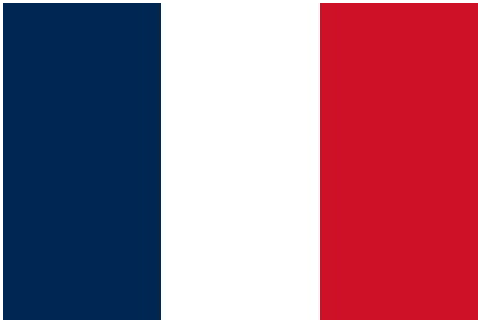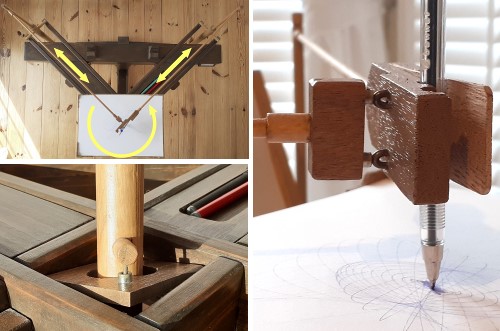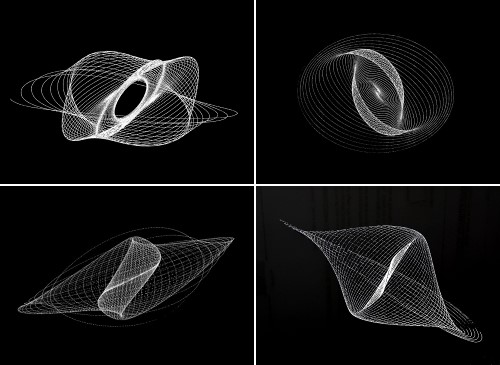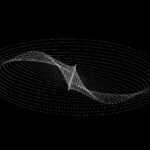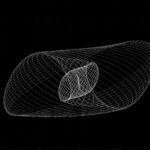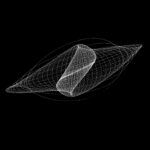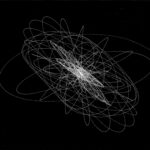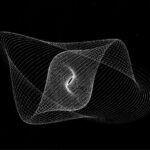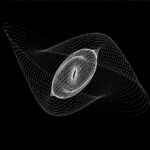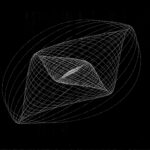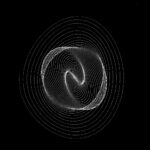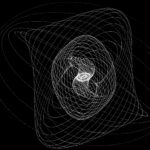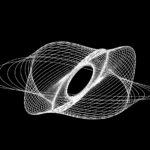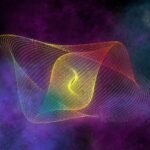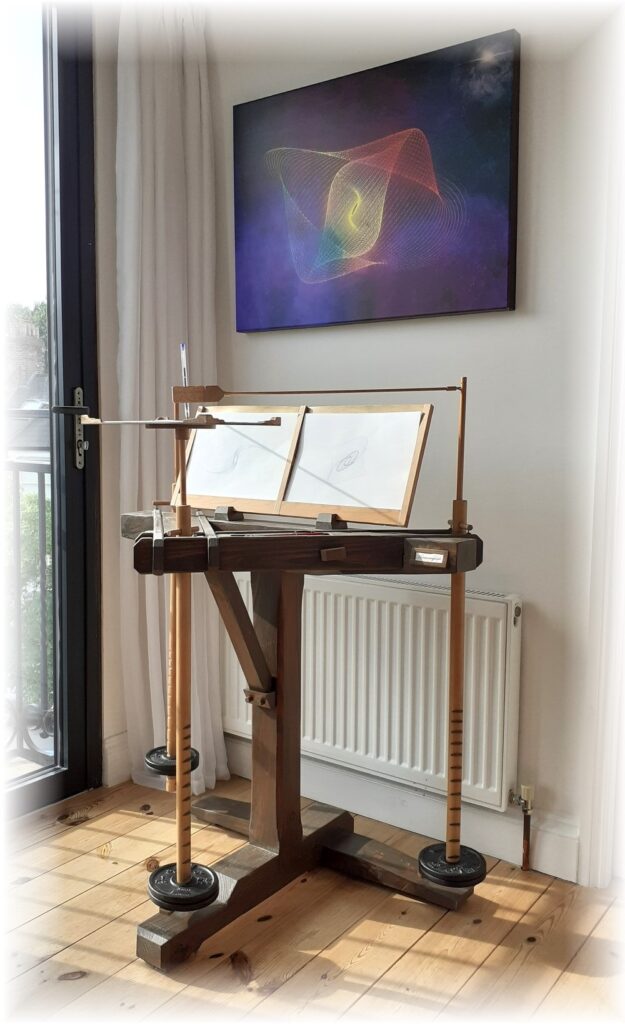

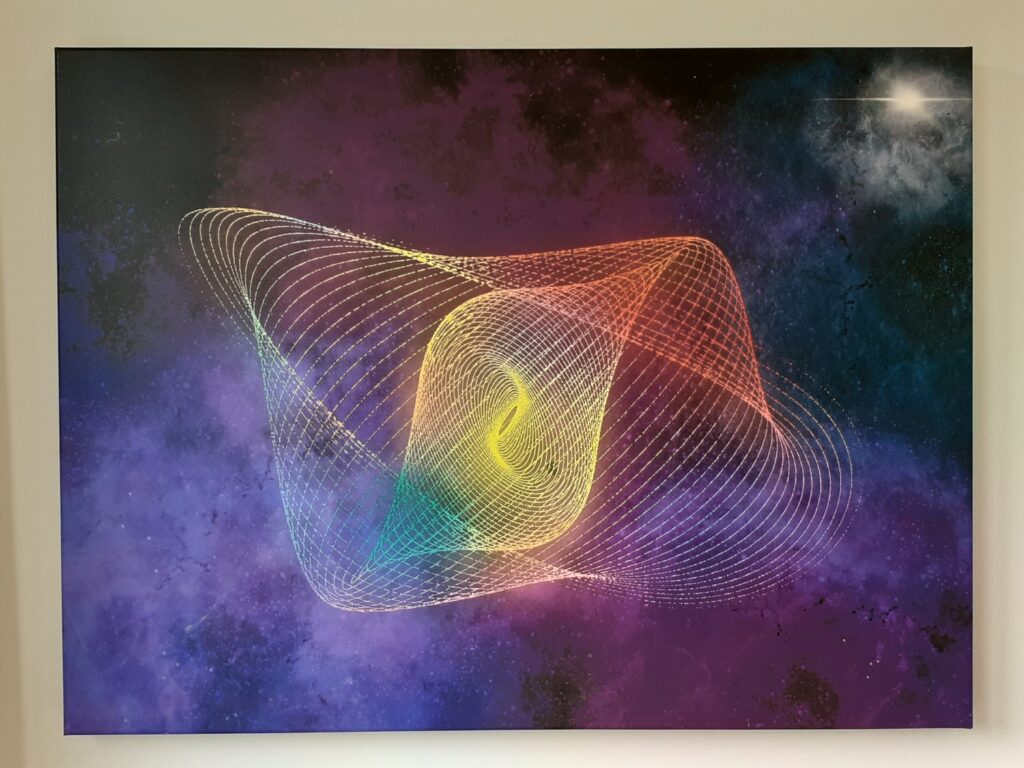
On this page
Description of the apparatus

Two pendulums control the movement of a pen on a drawing platform, which is itself mounted on its own pendulum. By adjusting the frequencies and phases of the pendulums in relation to one another we obtain different patterns.
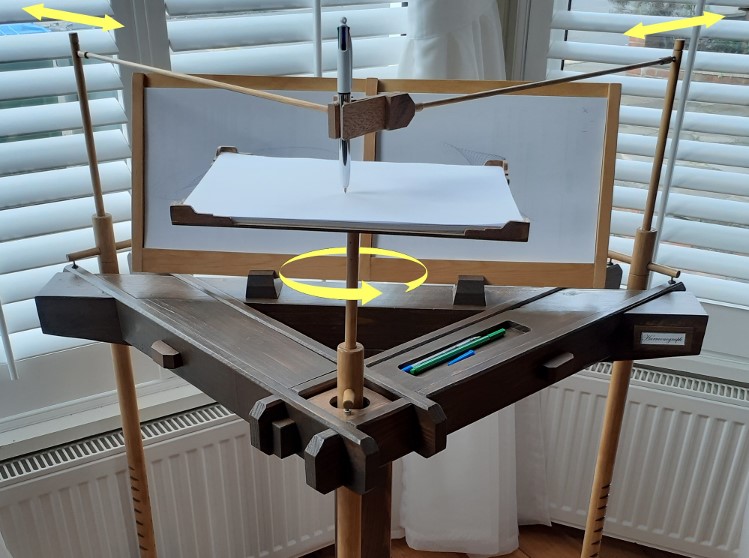
The general structure
The arms holding the pen are at a 90 degrees angle. Each arm is given a simple back-and-forth motion by its pendulum. The pendulum of the drawing platform is mounted on a more sophisticated joint (a gimbal) that allows for an ellipsoidal trajectory. The relative position of the pendulums and the need for their weights to move freely (without hitting one another or any leg of the device) gave us the idea for the general shape for our harmonograph: a horizontal rectangle triangle supported by a potence with a single leg that meets the triangle at its centre of mass.
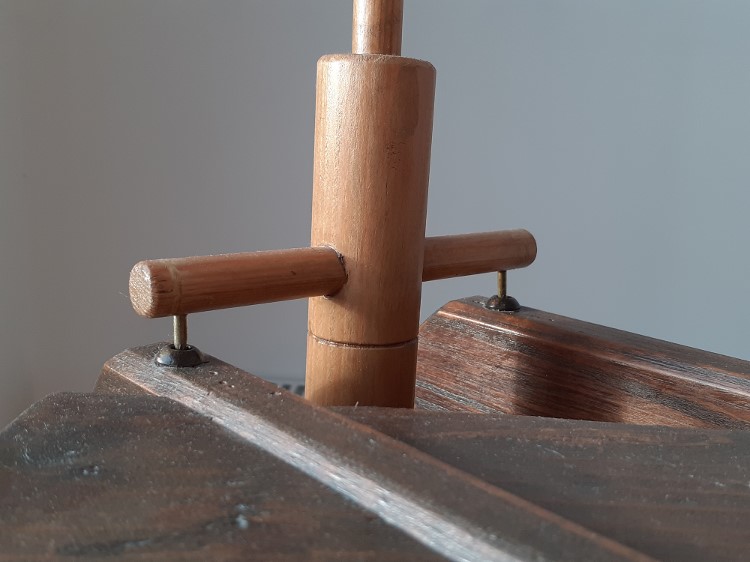
Joint of a “back-and-forth” pendulum
A horizontal dowel traverses the shaft of the pendulum. A nail protrudes under each end of the dowel and its point rests inside the hollow head of a screw inserted in the top of the potence. That allows the pendulum to rock with very little friction.
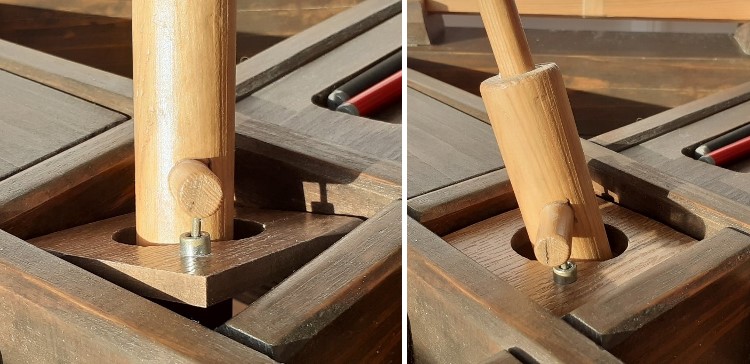
The gimbal
At the front of the triangle, a square plate is allowed to rock back and forth. The pendulum goes through a hole in the centre of the plate and rests on two screws placed one in front of the other. That allows for a sideway swing of the pendulum.
The combination of those back-and-forth and sideways motions produces the elliptical trajectory of the drawing platform.
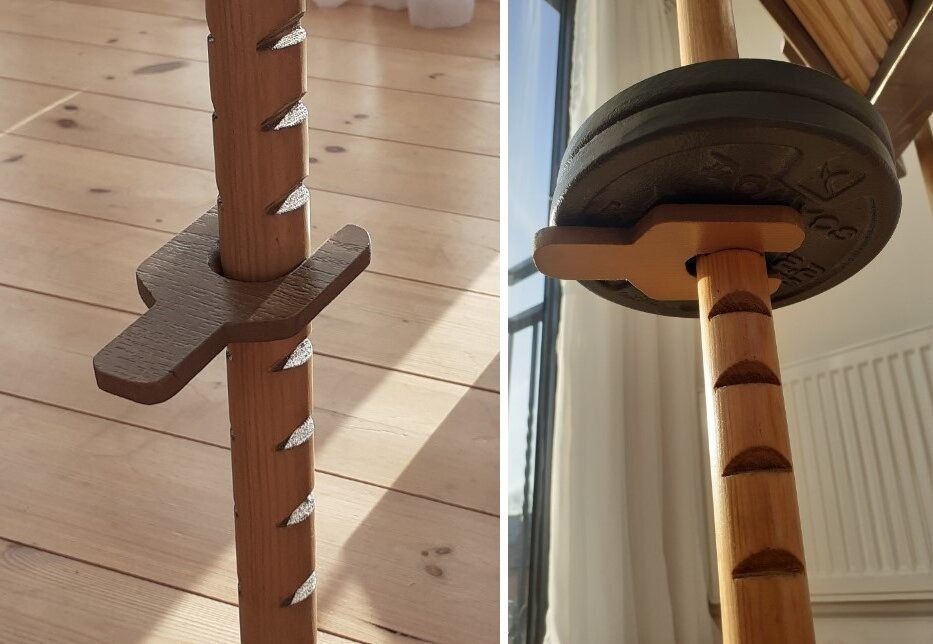
The notches on the pendulums follow a precise logarithmic progression, like frets on a guitar’s neck, and the interval between any two consecutive notches is the equivalent of a semitone. That allows to draw visual representations of musical intervals and chords. A weight is maintained at a specific height simply by resting on an element that slides inside a notch.
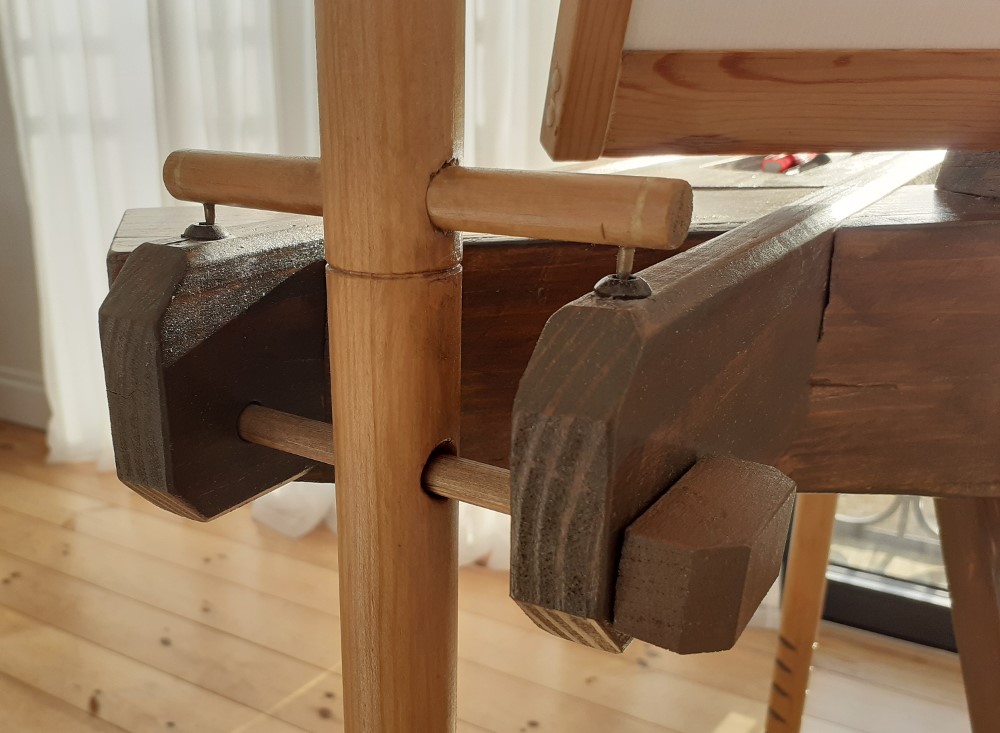
The pendulums can be immobilised individually with a horizontal peg. That allows to experiment with two active pendulums.
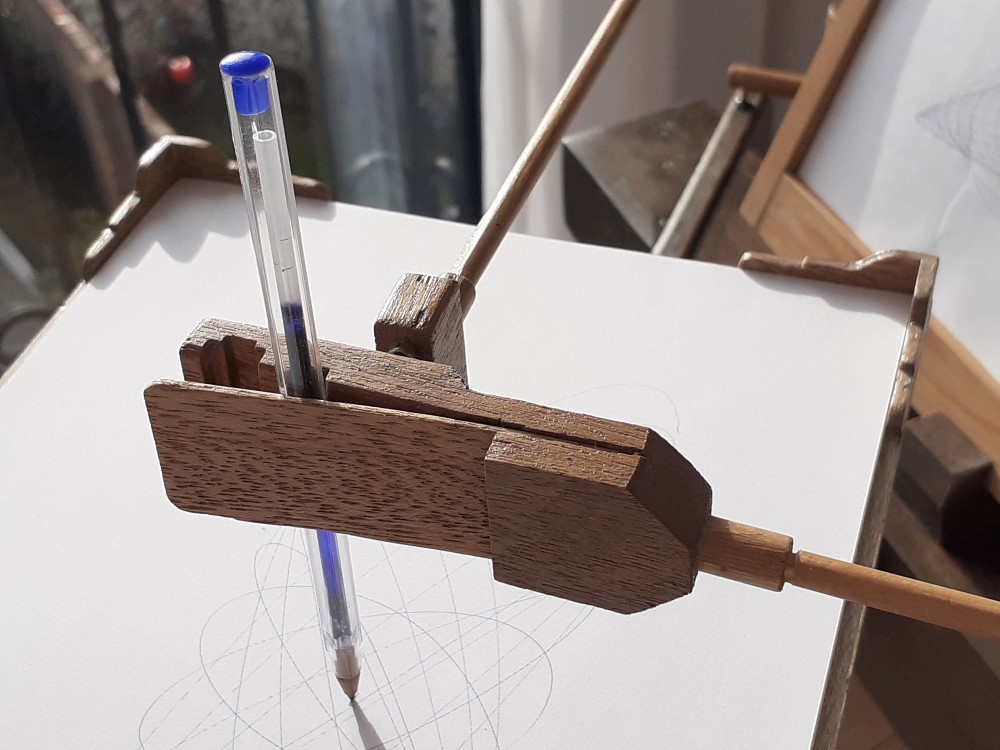
The pen is hold by a wooden hand whose ‘thumb’ is a flexible blade that presses the pen against a vertical slot. There are two slots to cater for different sizes of pens.
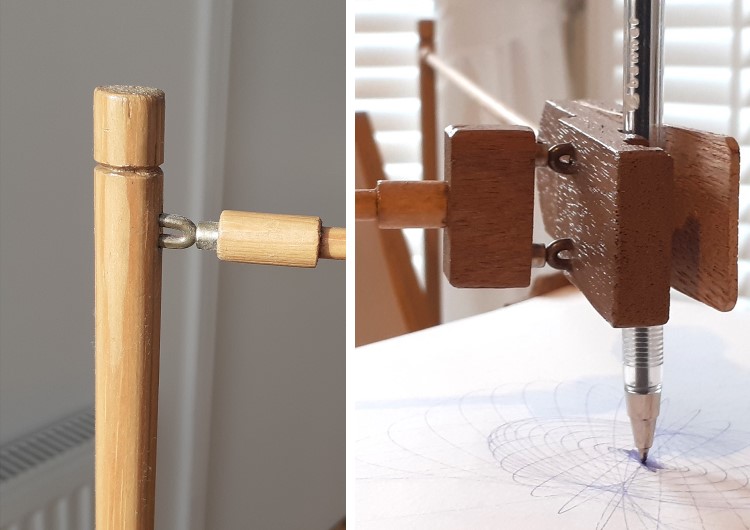
The joints at the ends of the arms are made of cylindrical magnets and nails bent in the shape of crescents. That allows a wide range of motion, similar to ball joints, but with the advantage of minimal friction.
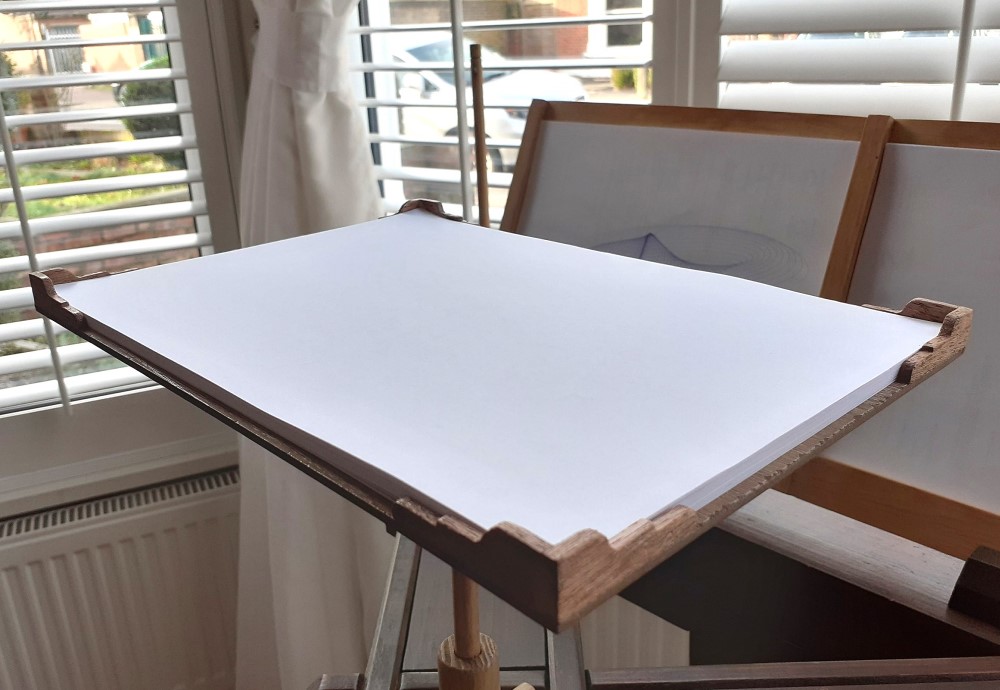
The drawing platform
The raised corners of the platform have two roles: they maintain the paper in place during operation and they allow to store a bundle of sheets on the platform.
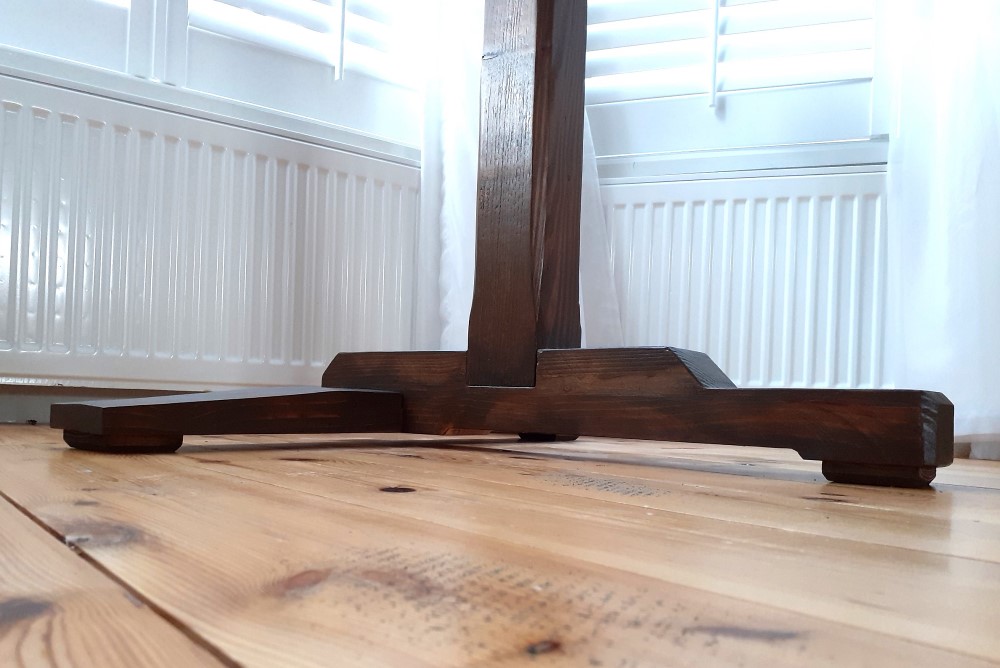
The feet
To achieve maximum stability, the device has three points of contact with the floor.
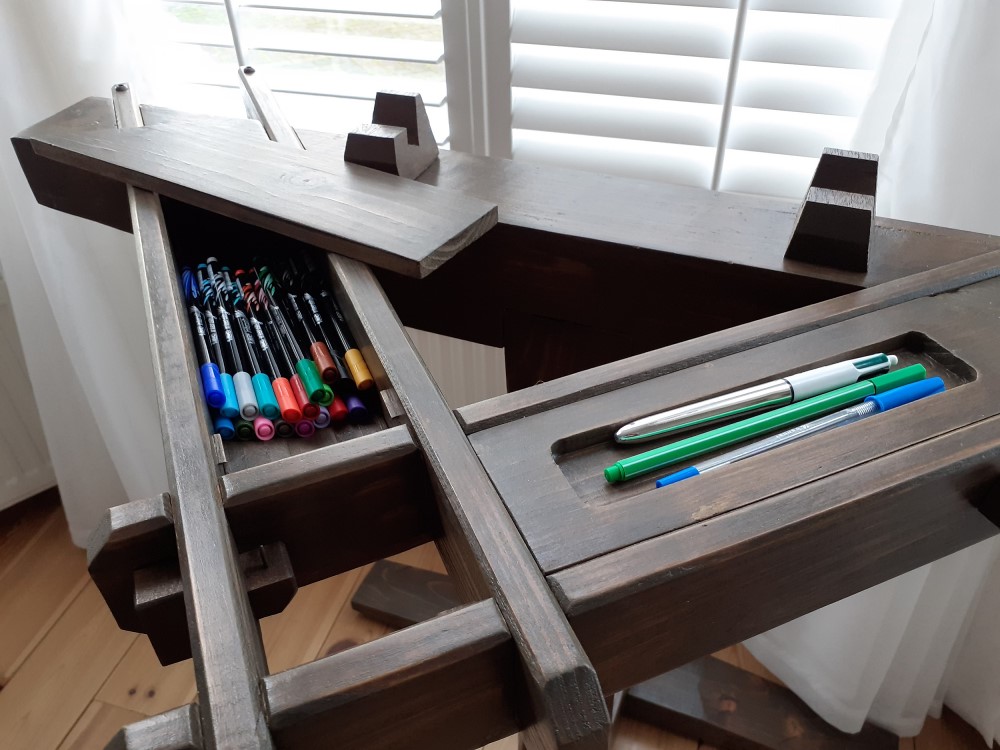
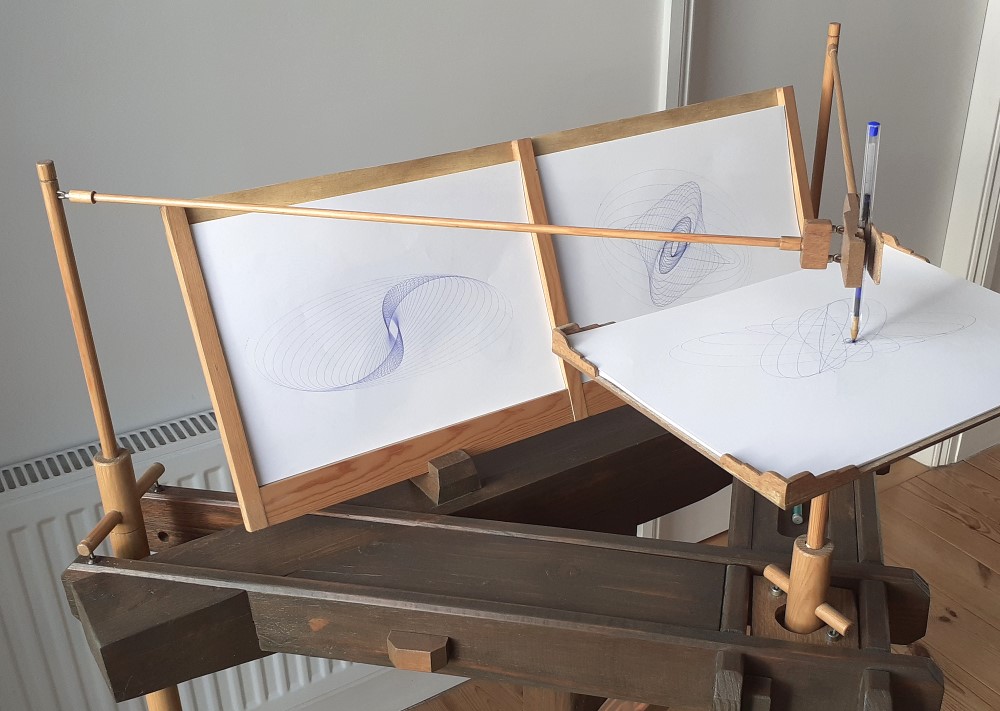
On the left, a storage space hidden under a removable panel contains a bunch of pens. On the right, a few pens rest in a recess.
At the back, two A4 drawings are displayed on a reclined double frame.
Harmonograms
The drawings produced by a harmonograph are called harmonograms. By adjusting the height of the weights we change the frequencies of the pendulums and we obtain a great variety of drawings. Furthermore we can start the harmonograph with one pendulum motionless (but free to move) while the other two are set in motion. The moving pendulums will then transfer energy, through the friction of the pen on the paper, to the third pendulum, which will start moving. Thus we obtain more complex drawings of 2-pendulum patterns that progressively transition into a 3-pendulum patterns.
Here are some harmonograms that have been processed digitally.


